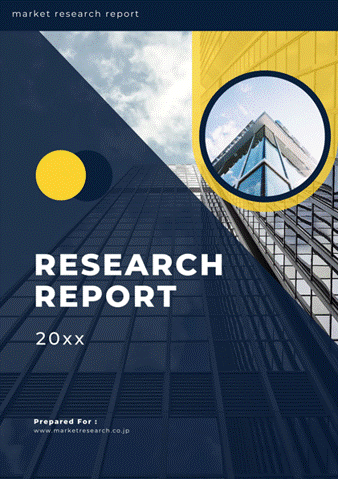 | • レポートコード:D0-MOR-AP0647 • 出版社/出版日:Mordor Intelligence / 2020年4月20日 • レポート形態:英文、PDF、110ページ • 納品方法:Eメール(受注後2-3営業日) • 産業分類:健康管理 |
| Single User | ¥629,000 (USD4,250) | ▷ お問い合わせ |
| Team User | ¥703,000 (USD4,750) | ▷ お問い合わせ |
| Corporate License | ¥1,110,000 (USD7,500) | ▷ お問い合わせ |
• お支払方法:銀行振込(納品後、ご請求書送付)
レポート概要
| 本調査レポートは、ハイコンテンツスクリーニングの世界市場について調査・分析した資料で、ハイコンテンツスクリーニングの市場概要、動向、セグメント別市場規模、地域別分析、競争状況、企業情報、市場機会分析などで構成されています。 |
Under the conventional method of toxicity studies, large libraries are screened in search of potential drug candidates. This method is expensive, resource- and time-consuming, and has a low success rate. Consequently, high content screening (HCS) solutions for testing the potential toxicity of chemicals and complex substances are being adopted by pharmaceutical companies to improve in-vitro toxicity testing by reducing the time and cost. The need for cost containment in pharmaceutical R&D, advancements in informatics solutions and imaging instruments, and government funding and venture capital investments across developed markets are the major factors driving the growth of the high-content screening (HCS) market. The increasing number of contract research organizations providing HCS outsourcing services and application of HCS in personalized medicine, present significant growth opportunities in the market.
Key Market Trends
Instrument Segment is Expected to Lead the Market Over the Forecast Period
Based on the product segment, the high content screening market is further segmented into instruments, consumables, software and services. Among all high content screening products, the instrument segment occupies the largest share of the market. The large share of this segment is attributed to advances in instrumentation and automation techniques and high prices of HCS instruments.Companies are developing automated solutions such as instruments with advanced visualization capability in line with enhanced software platform. these advances are boosting the market growth.In January 2017, PerkinElmer, Inc. launched the Vectra Polaris automated quantitative pathology imaging system. This multi-modal tissue imaging system enables researchers to gain a deeper level of understanding of disease mechanisms related to new cancer immunotherapy approaches.The increasing funds for product development and increasing use of the instruments is boosting the segment.
Asia-Pacific Region is Expected to Attain Highest Growth Rate Over the Forecast Period
The high content screening market in Asia-Pacific is expected to increase at the highest CAGR over the forecast period. Factors, such as increasing drug discovery research, government initiatives, growing focus of multinational companies on emerging markets, and developing R&D infrastructure are driving the growth of the HCS market in this region. Japan and China are expected to witness significant growth during the forecast period as many research and development programs are been carried out by the manufactures to improve the cell analyzers and flow cytomeres in the high content screening market.
Competitive Landscape
For compound profiling applications, many pharmaceutical companies are partnering with contract research organizations to identify potential candidates for drug discovery. The HCS market is highly competitive in nature. The majority of large global players are based out of the United States and these players have expertise in other biotechnology/medical-technology verticals as well, which helps them in controlling the major market share, through a presence in the allied markets.
Reasons to Purchase this report:
– The market estimate (ME) sheet in Excel format
– 3 months of analyst support
1 INTRODUCTION
1.1 Study Deliverables
1.2 Study Assumptions
1.3 Scope of the Study
2 RESEARCH METHODOLOGY
3 EXECUTIVE SUMMARY
4 MARKET DYNAMICS
4.1 Market Overview
4.2 Market Drivers
4.2.1 Government Funding and Venture Capital Investments Across Developed Markets
4.2.2 Increasing Applications of HCS in Life Science Research
4.2.3 Advancements in Informatic Solutions and Imaging Systems
4.3 Market Restraints
4.3.1 Lower Adoption of HCS Instruments Due to Their High Prices
4.4 Porter’s Five Forces Analysis
4.4.1 Threat of New Entrants
4.4.2 Bargaining Power of Buyers/Consumers
4.4.3 Bargaining Power of Suppliers
4.4.4 Threat of Substitute Products
4.4.5 Intensity of Competitive Rivalry
5 MARKET SEGMENTATION
5.1 By Product
5.1.1 Instruments
5.1.1.1 Cell Imaging and Analysis Systems
5.1.1.2 Flow Cytometers
5.1.2 Consumables
5.1.2.1 Reagents and Assay Kits
5.1.2.2 Microplates
5.1.2.3 Other Consumables
5.1.3 Software and Services
5.2 By Application
5.2.1 Primary and Secondary Screening
5.2.2 Target Identification and Validation
5.2.3 Toxicity Studies
5.2.4 Compound Profiling
5.2.5 Other Applications
5.3 By End User
5.3.1 Pharmaceutical and Biotechnology Companies
5.3.2 Academic and Government Institutions
5.3.3 Contract Research Organisation
5.4 By Geography
5.4.1 North America
5.4.1.1 United States
5.4.1.2 Canada
5.4.1.3 Mexico
5.4.2 Europe
5.4.2.1 Germany
5.4.2.2 United Kingdom
5.4.2.3 France
5.4.2.4 Italy
5.4.2.5 Spain
5.4.2.6 Rest of Europe
5.4.3 Asia-Pacific
5.4.3.1 China
5.4.3.2 Japan
5.4.3.3 India
5.4.3.4 Australia
5.4.3.5 South Korea
5.4.3.6 Rest of Asia-Pacific
5.4.4 Middle-East & Africa
5.4.4.1 GCC
5.4.4.2 South Africa
5.4.4.3 Rest of Middle-East & Africa
5.4.5 South America
5.4.5.1 Brazil
5.4.5.2 Argentina
5.4.5.3 Rest of South America
6 COMPETITIVE LANDSCAPE
6.1 Company Profiles
6.1.1 GE Healthcare
6.1.2 Danaher Corporation
6.1.3 Perkinelmer Inc.
6.1.4 Thermo Fisher Scientific Inc.
6.1.5 Becton, Dickinson and Company
6.1.6 Biotek Instruments Inc.
6.1.7 Bio-Rad Laboratories Inc.
6.1.8 Yokogawa Electric Corporation
6.1.9 Merck KGaA
7 MARKET OPPORTUNITIES AND FUTURE TRENDS